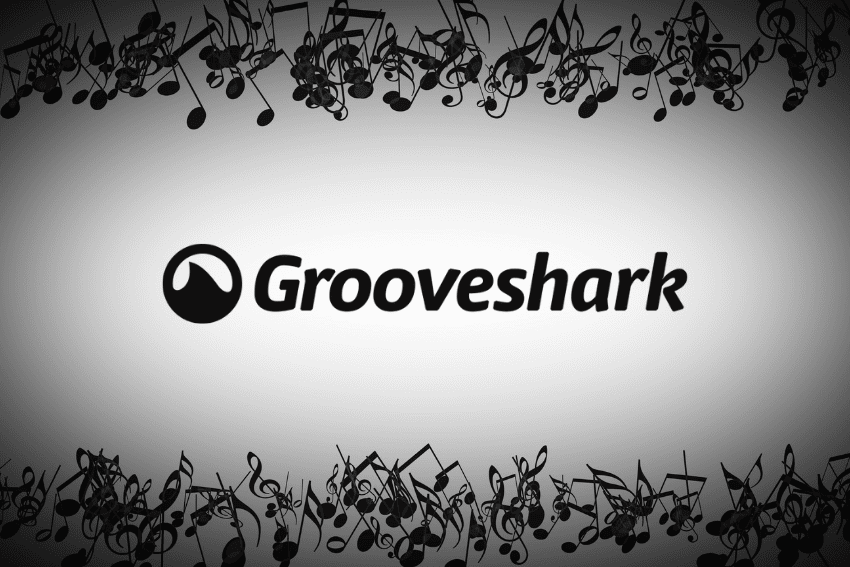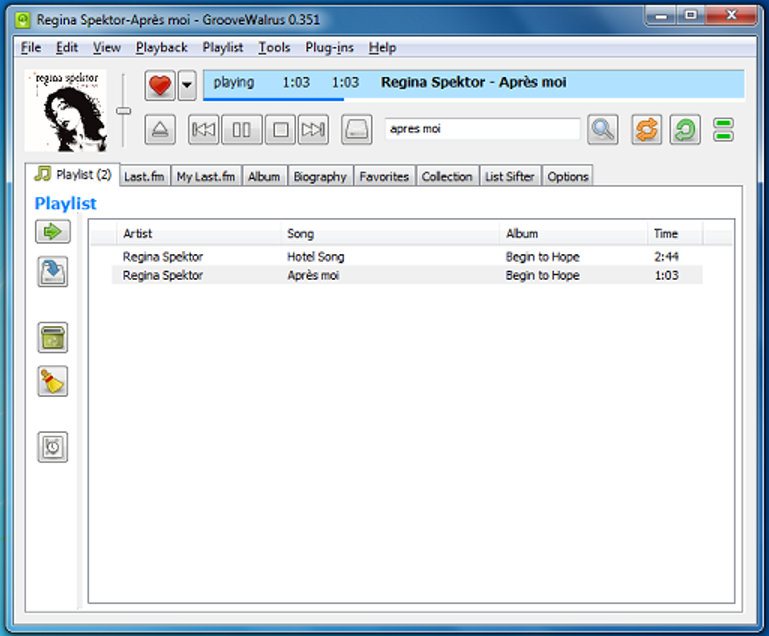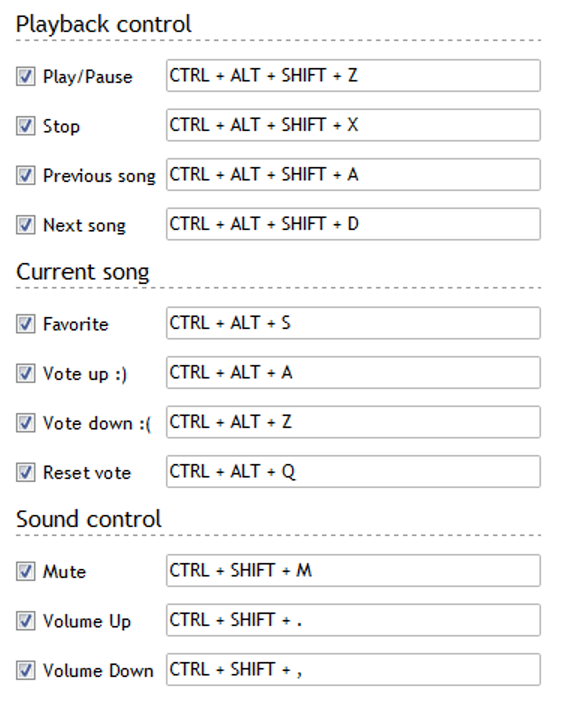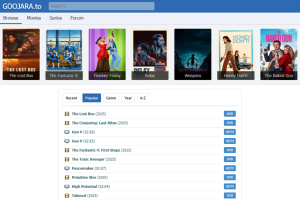Grooveshark was a pioneer. Before Spotify dominated our playlists and Apple Music became a household name, there was this plucky, controversial website that let you listen to almost any song you could imagine. Instantly. For free. It felt like magic. But how did Grooveshark actually work? The answer is a fascinating mix of clever technology, user participation, and a business model that ultimately couldn’t survive the legal storm it created.

This deep dive explores the inner workings of Grooveshark. We will peel back the layers of its technology, understand its unique approach to building a massive music library, and confront the copyright issues that led to its dramatic end.
What is Grooveshark?
Grooveshark was one of the best web-based music streaming services operated by Escape Media Group in the U.S. Music lovers can upload digital audio files that could then be organized and streamed in playlists. The Grooveshark website had music streaming features, recommendation systems, and search engines.
Grooveshark’s business model legally permits users to upload music that remains undetermined. The company faced a significant lawsuit registered by Universal Music Group concerning the effectiveness of Universal’s pre-1972 recordings. Grooveshark was sued for copyright breaches by Warner Music Group, EMI Music Publishing, and Sony Music Entertainment.
The platform is also concerned about the copyrights held by Facebook and Apple to remove Grooveshark’s app from the Facebook and iOS App Store, respectively. Moreover, Grooveshark was also available in alternative app stores like Google Play, BlackBerry World, Cydia, and many more; it was the default app on Ubuntu Touch. In April 2015, the music streaming platform abruptly shut down as part of a settlement between Universal Music Group, the service, Warner Music Group, and Sony Music Entertainment.
Some Interesting Facts About Grooveshark |
|
|---|---|
| Type of Site | Music Streaming. |
| Owner | Escape Media Group, Inc. |
| Founded By | Sam Tarantino, Josh Greenberg, Andrés Barreto. |
| Commercial | Yes (freemium). |
| Registration | Optional. |
| Launched | March 2006. |
| Closed | April 2015. |
| Current Status | Defunct. |
Grooveshark has launched a brand-new service drilling into the information they have gathered over the years, providing insight into musical artists and their fan bases. The Beluga enables users to examine any artist in the Grooveshark database, giving some interesting morsels of erudition on the kinds of people who choose to listen to the music on the platform.
The above data is concentrated on “extensive market research” surveying music fans. It’s found that the Goovers users are encouraged to leverage the platform service in exchange for some points; this can be used to upgrade the account on the site itself. The data collected has been improved by tapping into the listening activity of Grooveshark’s 20 million users globally.
Core Technology: A Peer-to-Peer Web Jukebox
At its heart, Grooveshark operated on a modified peer-to-peer (P2P) model, similar in concept to early file-sharing services like Napster or LimeWire. However, Grooveshark’s genius was in packaging this technology inside a sleek, web-based interface that felt effortless to use. You didn’t need special software. Just a web browser.
Here’s a breakdown of the process:
- User Uploads: The entire ecosystem depended on users. When you signed up, you were encouraged to upload your personal MP3 collection to your “locker.” This wasn’t just for your own storage. It was a contribution to the global Grooveshark library.
- Fingerprinting and Cataloging: When you uploaded a song, Grooveshark’s software would analyze the audio file. It created a unique digital fingerprint—a signature based on the song’s audio characteristics, not just its filename. This was crucial. It helped the system identify a song even if it was mislabeled, preventing duplicates and building a clean, searchable catalog.
- The Centralized Index: While the music files themselves were stored on users’ computers and servers, Grooveshark maintained a massive, central index. Think of this as a gigantic card catalog in a library. This index didn’t hold the books (the music files), but it knew exactly which book you wanted and where to find it across the entire network of users.
- Streaming on Demand: When you searched for a song—let’s say, “Bohemian Rhapsody”—the website would query its central index. The index would find all available sources for that unique fingerprint. It would then create a direct stream from whichever source was most efficient (often a server farm filled with previously uploaded content) to your web browser. This all happened in milliseconds.
Complete the Workflow of Grooveshark to Have Insight into!
Grooveshark facilitates users to enjoy their favorite music without any hassle. The platform has easy search options. This listening format helps users upload and listen to MP3s without hassle.
It enables them to keep track of friends’ music lists. The music streaming platform also enables users to subscribe to any plan as per their choice without any hassle. Grooveshark is free with ads, enabling users to enjoy their favourite tunes. However, the user has to pay if they want more perks from the music streaming platform.
GrooveWalrus: How It Provides Access to Grooveshark from Desktop

GrooveWalrus is a simple Windows desktop app that enables users to access most of Grooveshark’s features right from their desktop. They are not allowed to share their social networks with GrooveWalrus if all they’re concerned with is listening to music, which the app covers.
It also enables users to create playlists, search for songs, add songs to their favorites, and connect the app to Last.fm account. Surprisingly, users are not associated with their Grooveshark account. If they have invested time and effort in creating a fantastic playlist on the web account, there is no simple way to enjoy it on GrooveWalrus.
For Mac users, Grooveshark Desktop is an app that mirrors the web experience by keeping the design identical. They are allowed to discover and import an engaging list with Groovylist. If they have already got many playlists developed on Spotify, iTunes, LastFm, or any other music streaming platform, Groovylist enables users to import the playlist into Grooveshark.
GrooveBud: Helps to Turn Your Phone into a Remote Control
GrooveBud extension for Chrome enables users to control Grooveshark remotely from different devices or browsers. Once the extension, there is no need to figure it out. Users can simply launch the site by tapping the GrooveBud icon in the URL bar; the QR code will pop up just after.
Users have to scan the QR code visible to open the browser page with remote controls. If they want to use GrooveBud on another device, then they have to share the link using their email address to use it on other tools of their choice. Bare-bones, an actual remote, which is in the alpha stage.
Music lovers can use it to go between songs and skip songs that are currently playing. They are also allowed to pause, start, and adjust the volume as per their choice. However, the last feature of it is quite challenging to control; GrooveBud displays the playing songs and album art.
Use keySharky to Set Shortcut Keys

Keyboard shortcut junkie is always looking for an easy way to manage and control Grooveshark utilizing keyboard shortcuts; KeySharky is a fabulous Chrome extension that lets users do it. They need the keyboard shortcuts to add songs to their favorites, control volume, and control playback.
SharkZapper: Best Way to Control Grooveshark from Any Tab
SharkZapper is the best Chrome extension that enables you to access playback controls even when you are playing music in the background. It is accessible from a button next to the URL bar; it just acts as a bookmark button and can be utilized to launch Grooveshark.
It enables you to search for songs, view the current playlist, add a favorite, control playback aspects, etc. With a highly customized window, users are allowed to choose features to display. Information on the song is also shown on the button that users are currently playing without opening the mini window.
Grooveshark Enhancement Suite: Best Option to Remove Duplicate Songs
If you want to leverage keyboard shortcuts and extra features, then Grooveshark is the best option to choose from. In addition to shortcuts, users can use the extension to remove duplicate songs from the playlists and display the lyrics of the playing song. The buttons will be displayed next to the Radio button at the bottom of the screen. If users are looking for the duplicate song remover, then they can install the feature with an individual Extension, Grooveshark Duplicate Song Remover.
Remove Ads
Grooveshark ads make listeners feel annoyed. However, it’s worth paying when you, as a listener, want to enjoy your favourite tunes without disruption. Music lovers can use the ad-free Grooveshark extension to eliminate the ads. It eliminates the need for configuration. You also don’t have to install the music streaming software. Just open Grooveshark to enjoy what you love.
Scrobble Songs to Last.fm
Grooveshark makes it relatively easy to share what you are precisely listening to. You can listen to the entire playlist, share it, and more. If you want to build a connection between the Last.fm account and Grooveshark, use a Grooveshark Scrobbler extension. The scrobble songs song listen easier and update the “listening now’ feature on Last.fm.
The Legal Avalanche and the Inevitable End
For years, Grooveshark navigated a legal gray area. They tried to secure licensing deals after the fact, but their foundation of unlicensed content made negotiations difficult. The major record labels Universal, Sony, and Warner. It did not see an innovative tech company. They saw a massive copyright infringement operation.
The lawsuits piled up. The legal pressure intensified. The core issue was that Grooveshark’s internal documents eventually proved that its employees themselves had uploaded thousands of copyrighted songs to populate the service. This destroyed their “safe harbor” defense. The law protects passive service providers, not active participants in infringement.
Facing crippling lawsuits and impossible financial damage, the founders made the only choice left. On April 30, 2015, Grooveshark shut down permanently. The website was replaced by a somber note apologizing to the artists and labels and urging users to migrate to legitimate licensed services.
Why Developing a Solution Similar to Grooveshark is the Best Option?
Spotify is the best music streaming service globally, but despite its arguably tremendous number of subscribers and popularity, it hasn’t realized global domination just yet. Besides the streaming service, there are many streaming services that music lovers can leverage as per their requirements. If you want to build a solution similar to Grooveshark, you can do it by seeking a software development company’s support.
The Legacy of Grooveshark
Grooveshark’s story is a classic tale of digital disruption. It was a service born out of a real user need for universal, on-demand access to music. It proved that the market for streaming was enormous.
Its influence is undeniable. The seamless, web-based, all-you-can-listen-to model that Grooveshark perfected is the exact model used by Spotify, Apple Music, and others today. The key difference is that these modern services have navigated the complex world of music licensing, ensuring that artists and rights holders are paid for their work.
Grooveshark showed the world what was possible. It also showed that innovation cannot sustainably exist outside the framework of law and artist compensation. It was a revolutionary, beloved, and ultimately flawed pioneer that helped shape the music landscape we enjoy today.
Future of Music Streaming – What’s Next Beyond Grooveshark?
Music streaming is no longer limited to the sophisticated algorithms of Spotify. It has come a long way from uploading music or playing favorite songs. The music streaming industry promises to evolve how people enjoy their favorite tunes. Check more on to find what is next in the music streaming industry:
- AI-Driven Personalization – Smarter Playlists, Deeper Connections
- Virtual and Augmented Reality Concerts – Bringing Live Events to You
- Blockchain for Copyright and Royalty Management
- Social Listening Experiences – Music as a Shared Journey
- Voice and Gesture-Controlled Streaming
- Hyper-Local and Niche Content Discovery
- Environmental Impact Awareness
The list doesn’t end here. There are a lot more trends that will come along the way for the music industry. The innovations shaping the future of music streaming aim to personalize listening. Platforms like Grooveshark prioritize users’ freedom to upload and share content. Tech will support these creative ways we’ve never imagined.
The advanced tech platform provides endless possibilities for music lovers who love a better streaming experience. Tech is making streaming a more integral part of everyone’s lives, and it has just started.
More Than Streaming: Improved Experience Waiting for You!
Music has become a primary part of our everyday life. A platform similar to Grooveshark helps to change the overall listeners’ experience.
With modern tech, the future of music streaming is set to be more personalized. It goes beyond just clicking on the play option. Whether it’s about playing the songs or stepping into the live event, the music world offers endless ways to enjoy life’s rhythm.
Frequently Asked Questions
Was Grooveshark legal?
For most of its existence, Grooveshark operated in a legal gray area. It relied on the DMCA safe harbor provision, but courts ultimately ruled that it was not protected because its employees knowingly uploaded copyrighted material, making the company a direct participant in infringement rather than a passive host.
Why did Grooveshark shut down?
It shut down due to overwhelming legal pressure and lawsuits from major record labels. After losing its key legal defenses and facing potentially massive financial penalties, the company chose to close permanently as part of a settlement agreement.
Could Grooveshark ever come back?
A comeback in its original form is virtually impossible. The music licensing landscape is now well-established, and any new service would have to secure legal agreements with labels and publishers before launching, which was Grooveshark’s fundamental hurdle.
Did artists get paid when their music was played on Grooveshark?
Generally, no. Because the vast majority of its content was uploaded by users without permission, Grooveshark did not have the proper licensing agreements in place to pay royalties to artists, songwriters, or record labels. This was the primary reason for the lawsuits against them.
What replaced Grooveshark?
Legitimate, licensed streaming services like Spotify, Apple Music, Amazon Music, and YouTube Music now fill the space that Grooveshark pioneered. These services offer similar on-demand access but operate through legal licensing deals that ensure rights holders are compensated.


